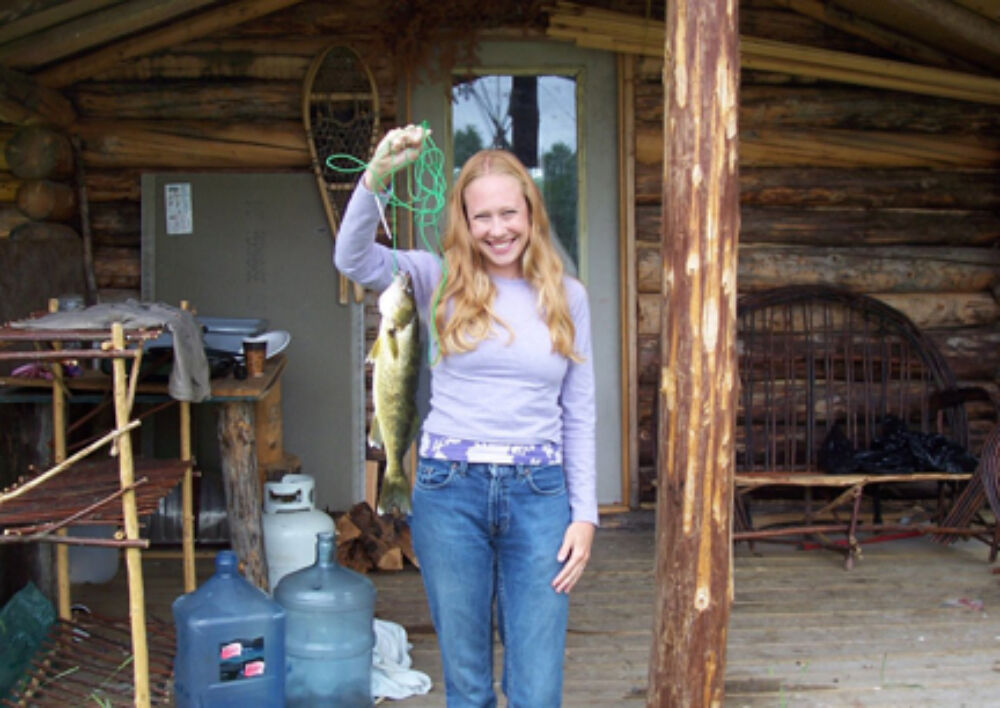I don’t know why I fell in love with the boreal forest.
It may have something to do with the loons that keep me up at night or the songbirds and ravens that wake me at dawn. Or it may be the way the forest smells; a distinctive blend of poplar, pine, and rocky earth. I’m positive that the warmth and strength of the Anishinaabe people who have lived there since time immemorial—and who still fight for the right to protect the forest which sustains and shelters them—had something to do with it. Although I now live and work in the Midwestern United States, the boreal forest and its people are always on my mind and in my heart.
As a child I spent as much time outdoors as I could. When I grew older and started paying attention to the wider world, I became determined to contribute to resolving the environmental problems we now collectively face. Understanding why people do what they do—why some of us dedicate our lives to protecting the environment while others seem not to care about the earth’s fate—is a lifelong project for me.

The boreal forest has often been called “the lungs of the world.” It is a vast and vital ecosystem that mediates the effects of global climate change and sustains an incredible array of plant and animals life. For these reasons alone, it is worth preserving.
But from Anishinaabe activists, I learned that protecting the earth isn’t just about setting aside wilderness areas and preserving far-off nature. I learned that the environment cannot be understood as separate from human livelihood, culture, and political empowerment. I learned that we, too, are part of the natural world.
People rarely act in environmentally sustainable ways unless these kinds of connections—whether conscious or not—are there. And so, these days I keep a few goals close to me whenever I write:
I hope readers will pause for a moment and consider how connections to the environment shape all of our lives, albeit in diverse ways.
I hope they think about how they can make the world a better place.
And I hope to inspire positive change, one sentence and one person at a time.
About Strong Hearts, Native Lands
In December 2002 members of the Grassy Narrows First Nation blocked a logging road to impede the movement of timber industry trucks and equipment within their traditional territory. The Grassy Narrows blockade went on to become the longest-standing protest of its type in Canadian history. The story of the blockade is a story of convergences. It takes place where cultural, political, and environmental dimensions of Indigenous activism intersect; where history combines with current challenges and future aspirations to inspire direct action.
In Strong Hearts, Native Lands, Anna J. Willow demonstrates that Indigenous people’s decisions to take environmentally protective action cannot be understood apart from political or cultural concerns. By recounting how and why one Anishinaabe community was able to take a stand against the industrial logging that threatens their land-based subsistence and way of life, Willow offers a more complex “and more constructive” understanding of human-environment relationships.
Grassy Narrows activists have long been part of a network composed of supporters that extends across North America and beyond. This book shows how the blockade realized those connections, making this community’s efforts a model and inspiration for other Indigenous groups, environmentalists, and social justice advocates.
Posted by Anna J. Willow
October 31, 2012
Categorized as Author Posts
Tagged aboriginal, boreal, environment
Larry Krotz on Tour! Jess Koroscil on Stories in a New Skin
